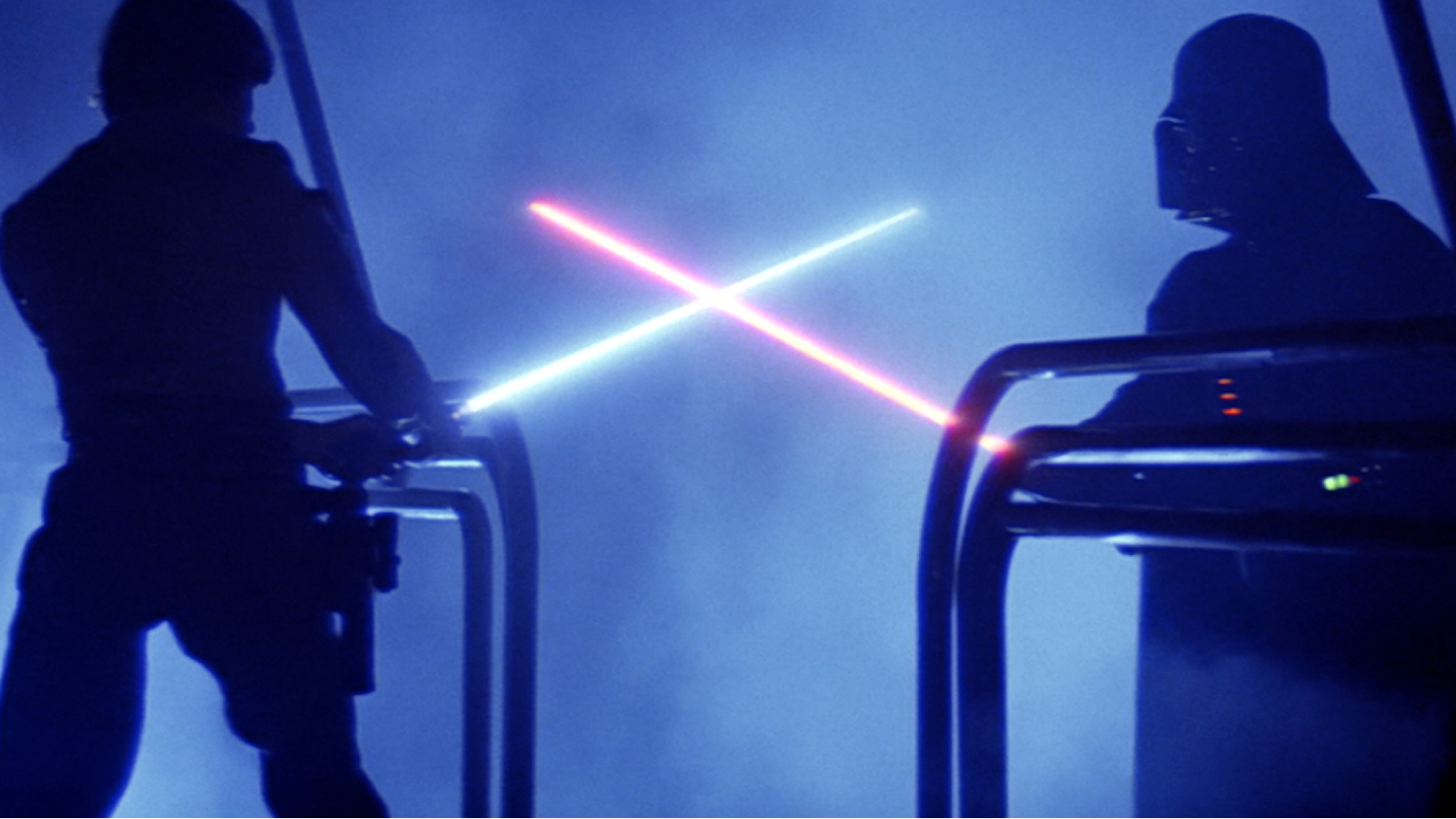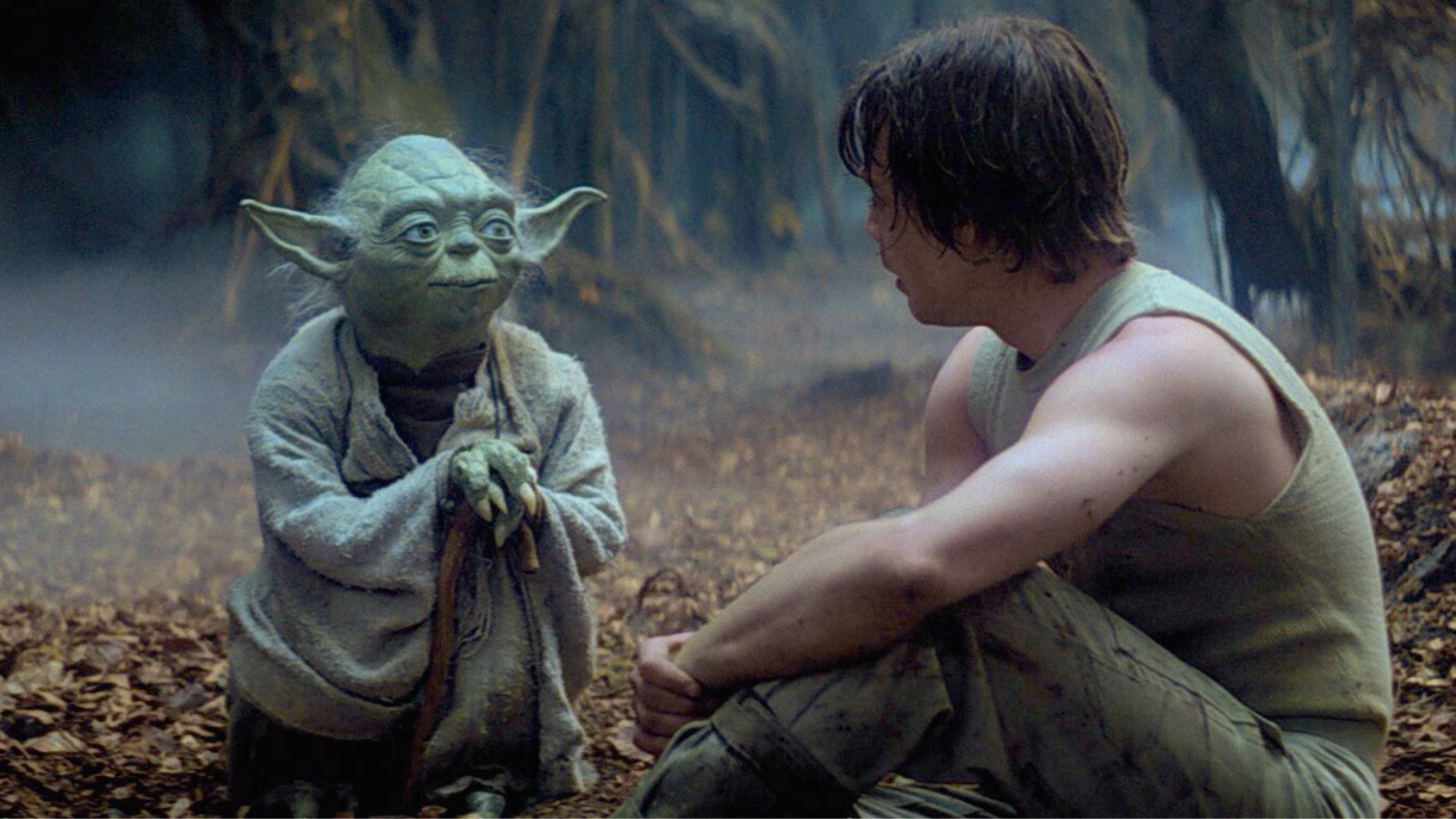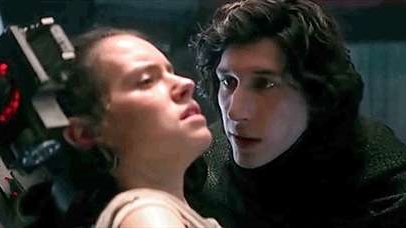Fainting and Lucas going "apeshit" - here's the little-known story behind The Empire Strikes Back
After the mind-blowing success of A New Hope, the pressure was on for the sequel - here's the behind-the-scenes story of how it got made

Star Wars nearly killed George Lucas. The director’s ambitious space saga, which nobody understood nor cared about (not even its cast) looked set to be a disaster of intergalactic proportions. During production in 1976, the special effects department was struggling with its groundbreaking technologies, while unbearable heat in Tunisia had tempers rising.
“People were looking at the first screenplay and saying, ‘What is this? Is this camp – or what is going on here?' They didn’t get it and it’s not their fault,” star Mark Hamill said in an interview with Rona Barrett's Hollywood Super Special: Winter 1978. It came to a head when Lucas suffered chest pains during filming of his opus. The director, diagnosed with hyper-tension and exhaustion, was advised by doctors to take things easy. He all-but refused. And, somewhat fortuitously, the 1977 release of the soon-to-be-retitled Episode 4 gave Lucas a new hope. The cold cynicism and disheartening apathy that plagued the film ahead of its cinematic debut changed overnight as Star Wars was welcomed by movie fans of all shapes and sizes.
“Star Wars is one of the best word-of-mouth movies in history,” Hamill noted. And he wasn’t wrong. With the archetype-heavy fantasy updating sci-fi TV serials (like Flash Gordon) for the big screen generation, Star Wars was a hit. As the fans multiplied and the box office sang with receipts, one thing was clear: everybody wanted more.

“I think that in the second picture we’ll be able to do a lot of things that George wanted to do in the first but couldn’t, simply because then it was an unproved product"
Mark Hamill, 1978
Luckily, George Lucas already had the sequel rights to his unexpected megahit. Movie legend has it that Lucas had already mapped out the plots for all three of his proposed Star Wars movies before filming A New Hope. The truth, however, is slightly less mastermind-y. “There was never a script complete that had the entire story as it exists now,” Lucas told Denise Worrell in 1983. “As the stories unfolded, I would take certain ideas and save them. I kept taking out all the good parts, and I just kept telling myself I would make other movies someday.”
Before starting on Star Wars 2 – it wouldn’t get the subtitle The Empire Strikes Back until later – Lucas had only the asteroid chase planned (and, presumably, considering Vader is Dutch for 'father', something to do with Skywalker's parentage). Bright side? Star Wars had set up the universe. It had an aesthetic. It had the good (Jedi) and the evil (Empire). It had its lead characters - young Jedi-in-training Luke Skywalker (Hamill), handsome rogue Han Solo, the headstrong Princess Leia (Carrie Fisher), the asthmatic Darth Vader, alongside a galaxy of other memorable players. So a sequel (or, alright Lucas, continuation) already had a head start in the story stakes. And though fans were eager for a follow-up, those involved in the second Star Wars were all too aware of the curse of the sequel…
Sequelitis strikes back
Before shooting on Empire began, Hamill talked about how sequelitis had often ruined many a potential franchise. “Everybody knows about the ‘curse’ of the sequel,” he mitigated in 1978. “But I think that Star Wars is a little bit different. It was not, for instance, the intention of the people who made Jaws to make a sequel. “The intention with Star Wars was to make it a series right from the beginning. It all started with three films in mind. [George Lucas] set the stage… he set up a galaxy far, far away. Now he can go in many different directions."
There was also the benefit of continuing a much-loved, and well-received, story. “I think that in the second picture we’ll be able to do a lot of things that George wanted to do in the first but couldn’t, simply because then it was an unproved product," Hamill says. “Now on the sequel we’re going to be able to take a lot more chances in the sense that now we have the Good Housekeeping seal of approval – which we didn’t have before.” Meanwhile, Lucas was adamant that he didn’t need a studio to help him make the movie. Having had bad experiences with American Graffiti, which Universal Pictures had little faith in, he wanted to be able to make the movie he wanted.
Bringing all the latest movie news, features, and reviews to your inbox

Resolving to finance Empire himself, Lucas took out a personal bank loan for $33m (based on the financial success of the first Star Wars), and signed a deal for 20th Century Fox to distribute the film. “This was a perfect opportunity to become independent from the Hollywood system,” Lucas says in documentary Empire of Dreams. “I didn’t mind releasing it through them but it was really going to them for the money and them saying, ‘Well I like the script but I want to change…’. That’s the part I wanted to avoid. I decided I was going to finance the film myself and I was going to make it completely independently.” Lucas finally had everything he wanted – success, a burgeoning profitable franchise, and total creative control. But, oddly, he didn’t want to direct.
This time around, things were going to be different behind the scenes of Star Wars. Having learned from the first film, Lucas decided to take a more hands-on role in his special effects company Industrial Light & Magic, while also wrangling the finances. The fall-out from that was that he wouldn’t have the time or energy to direct Empire as well. "It was just too hard to set up a company, get the money, get the film made and also be down there on the set every day trying to direct it," Lucas says. "So I decided I'd hire a director."

Lucas turned to renowned director Irvin Kershner, who had taught Lucas at the USC School Of Cinema-Television. “I had a phone call from [producer] Gary Kurtz, who asked me if I would be interested and I said I would think about it,” Kershner remembered in an interview in 1990. “I talked about it with my agent and I said, ‘Oh, what a hard act to follow! Star Wars! I don't know.’” Put off by the enormity of the responsibility, Kershner initially turned the offer down. “I never believe in topping, I believe in just making something which stands on its own terms,” he reasoned. A meeting with Lucas himself soon allayed his fears. “I thought about it and said, ‘Well, why do you want me? Of all the younger guys around, all the hot-shots, why me?’” the director says. “And I remember he said to me, ‘Well, because you know everything a Hollywood director is supposed to know but you're not Hollywood.’ I liked that.” Empire had a director. Time to assemble some stars.
How Hamill's maturity brought new depths to Luke
While Mark Hamill was certain that his young, impressionable Luke Skywalker would be considered little more than a sidekick to Han Solo in A New Hope, it quickly became obvious that he was as much a star as his wiseguy comrade. But his second turn in the role would find Hamill playing a far different Skywalker. After leaving behind the farm and jetting off into space, Luke’s matured and is desperate to become the hero he’s never dared dream of being. For Hamill, Empire represented the “most surprising, most challenging, the most thought provoking” of the Star Wars movies. “Who would have thought that good guys would be defeated?” he notes.
It would also be the hardest for the actor to shoot. “It was like going to work and being beaten up for 12 hours,” the actor recalls. “Mark was incredible,” Kershner remembers. “He interpreted the character, gave him depth, he was a true trooper, and he was up to every challenge. Working with Yoda was a real challenge.” Talking of, and fittingly for a space opera, Hamill would spend most of Empire working with a little green man.
Read page 2 to learn about the history of Star Wars' most iconic line which reveals George Lucas at his best and worst…
Josh Winning has worn a lot of hats over the years. Contributing Editor at Total Film, writer for SFX, and senior film writer at the Radio Times. Josh has also penned a novel about mysteries and monsters, is the co-host of a movie podcast, and has a library of pretty phenomenal stories from visiting some of the biggest TV and film sets in the world. He would also like you to know that he "lives for cat videos..." Don't we all, Josh. Don't we all.



